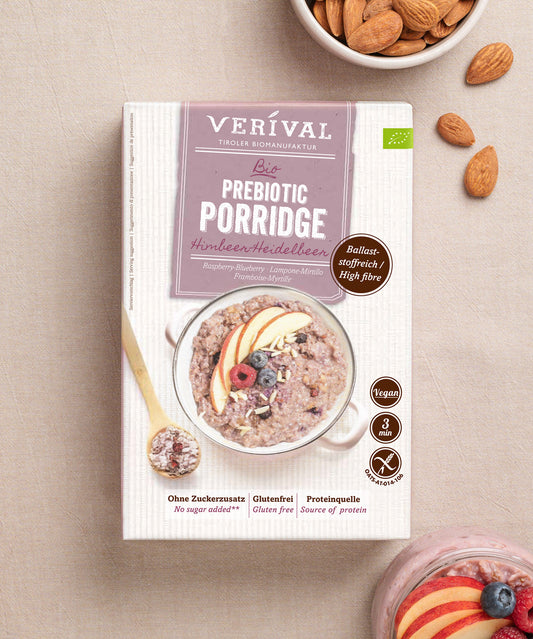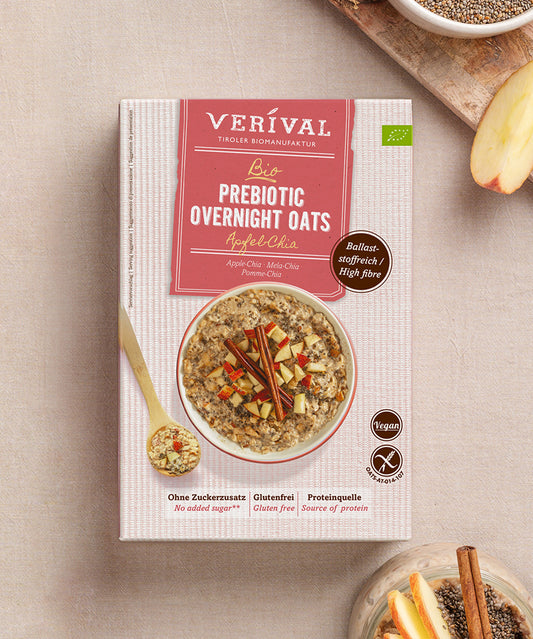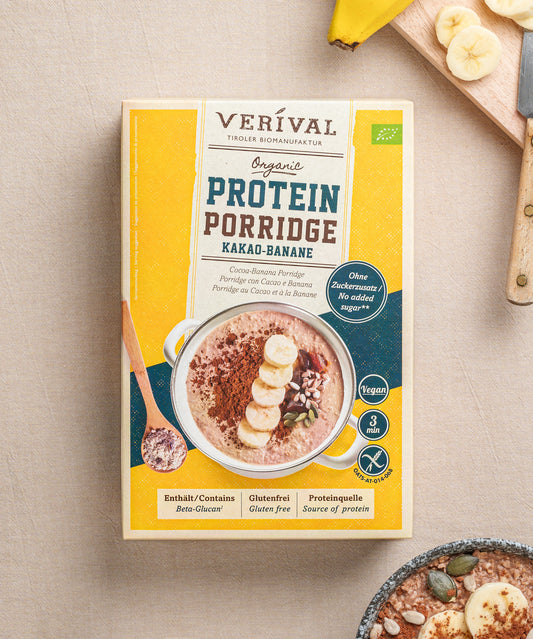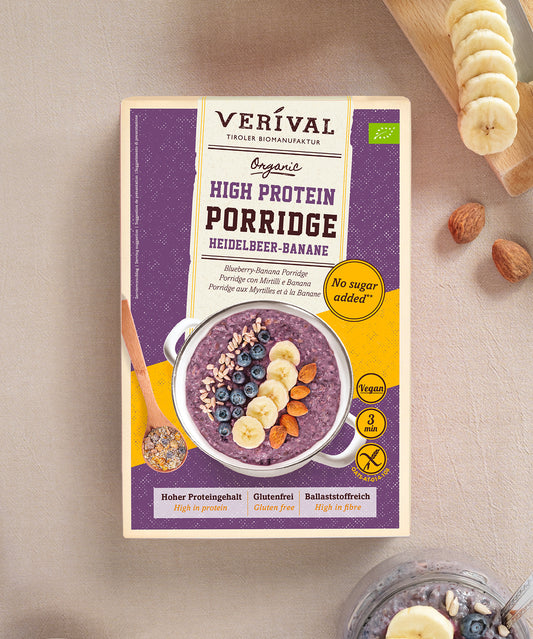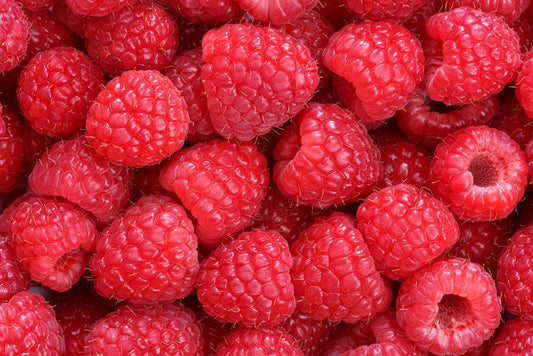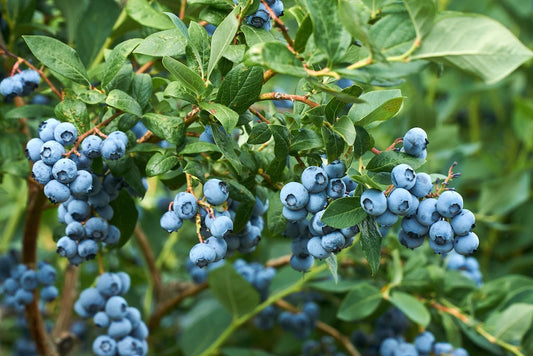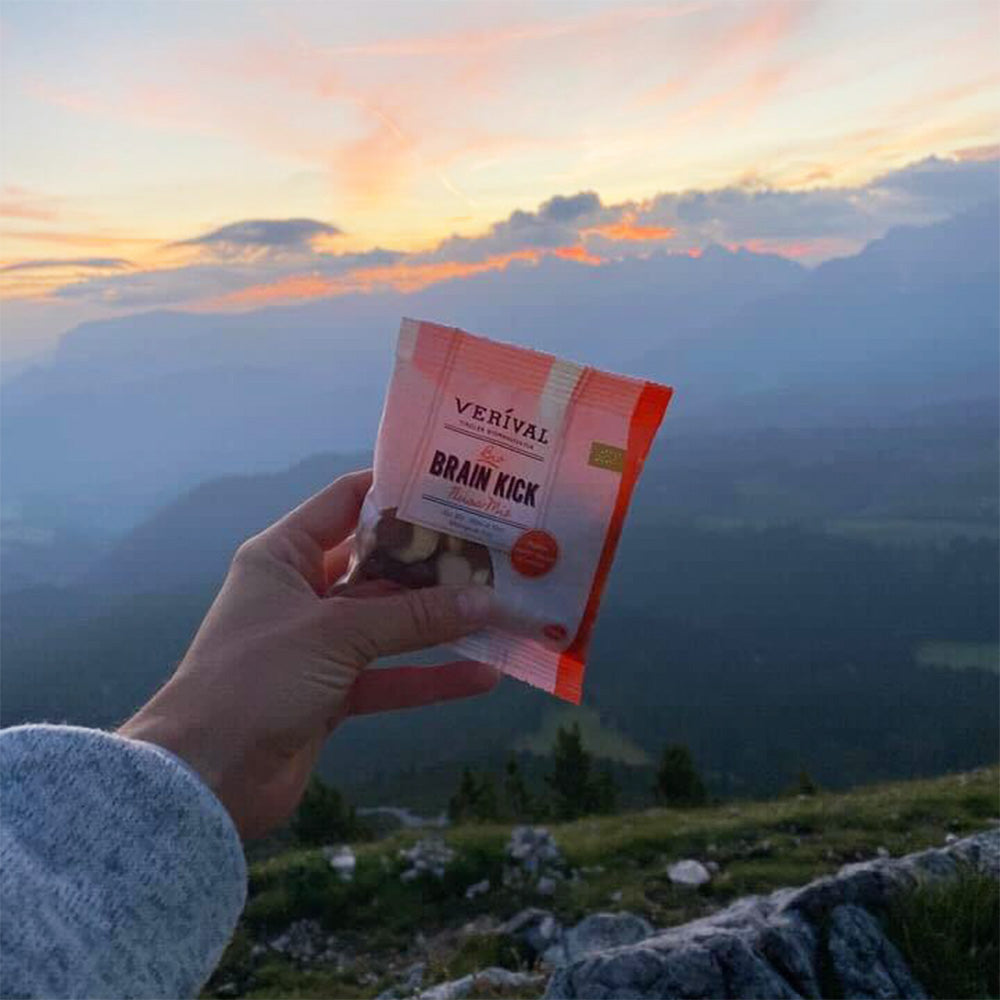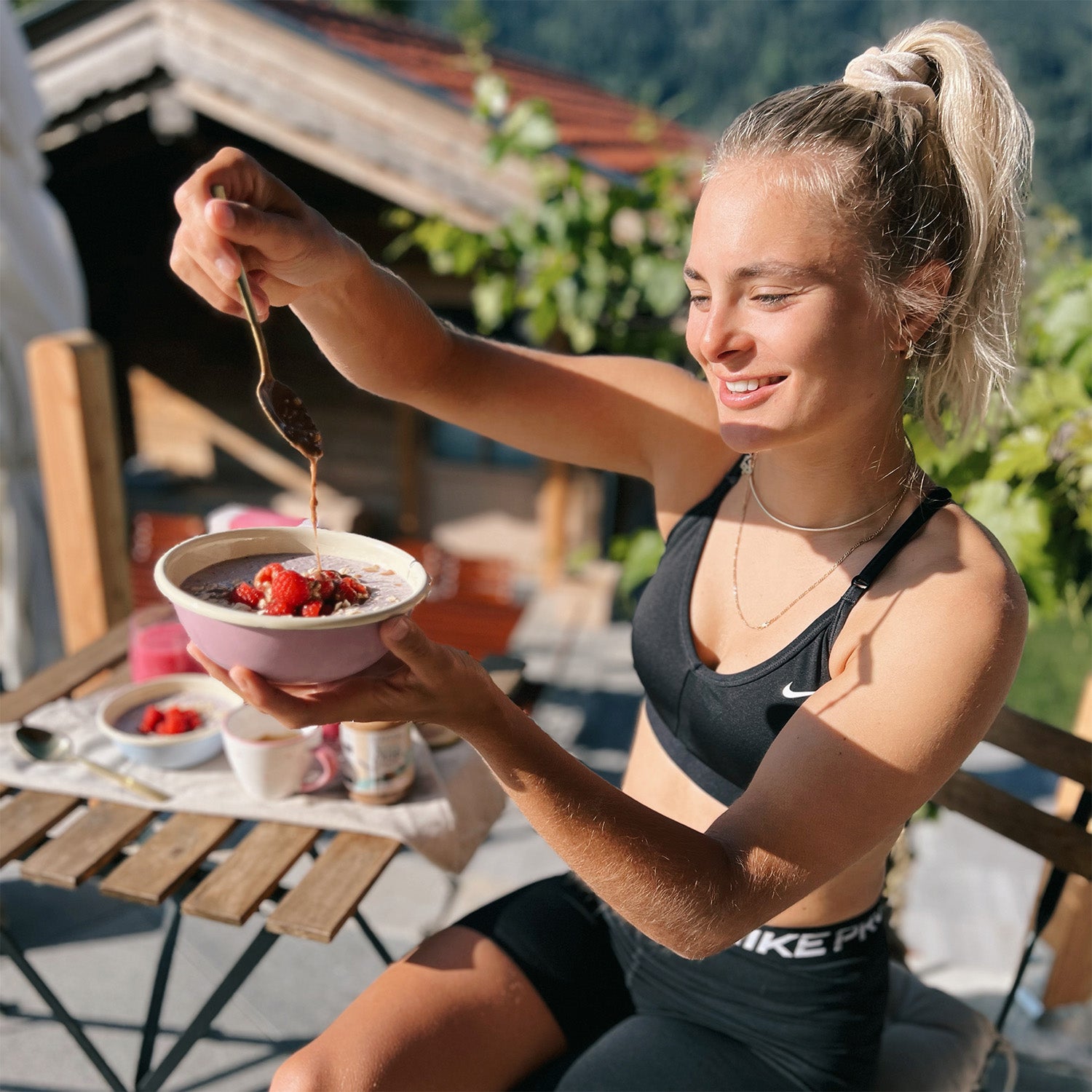Clean Eating, as a healthy nutrition and lifestyle concept, has long since found its way into our everyday lives and is practiced by many – consciously or unconsciously – with conviction. The idea is simple: whole, natural foods – yes, please! Industrially processed products – no, thank you!
We'll tell you how clean eating works and have the best and fastest recipes for you.
What is clean eating?
Literally translated, the English term “clean eating” means something like pure or clean eating. This relatively new nutritional trend is based on the idea of consuming only whole foods and avoiding processed products. Eating fresh vegetables, fruit, nuts or dairy products – preferably organic – is said to have positive health effects.
Those who follow the clean eating guidelines completely eliminate preservatives, colorings, flavor enhancers and refined sugars from their diet. In addition, gluten and dairy products are often avoided. Furthermore, the dishes are usually vegetarian or vegan.
Is clean eating healthy?
Clean eating is all about natural and fresh ingredients. Because fruit and vegetables provide healthy vitamins and minerals, they optimally support the body in its daily tasks. In addition, you cook for yourself and avoid fast food and other nutrient-poor foods. If you also pay attention to your daily needs for carbohydrates, healthy fats and protein, clean eating is an excellent approach to living a healthier life.
However, the concept of clean eating has also repeatedly been criticized. Nutrition experts are particularly critical of the fact that it propagates the strict classification of food as “good” or “bad” and increases the risk of eating disorders. In addition, strictly avoiding entire food groups can lead to nutrient deficiencies if suitable substitute products are not used.
All in all, however, it is fair to say that clean eating is healthy as long as it is not taken to extremes. After all, anyone who imposes excessively strict dietary rules on themselves and eats a highly restrictive diet is more likely to harm their health than help it.
What should I eat with clean eating?
If you want to eat according to the clean eating principle, you should follow these nutritional rules:
- Eat rainbow colors: Make your diet as colorful as possible and vary different types of fruits and vegetables.
- Regional and seasonal: Food from the region that is in season contains the most nutrients.
- Look for organic quality.
- Nutrient-rich breakfast: Fill up on healthy breakfast foods and start the day full of energy.
- Avoid sugar and artificial sweeteners and use natural sweeteners such as honey or agave syrup instead.
- No artificial additives: it's best to cook your own food to avoid preservatives, colorings, flavor enhancers and the like.
Discover Verival's organic breakfast products here.
Before you start clean eating, you should be aware that everyone's body is different. These rules should not be blindly followed. If you are unsure which points are suitable for you, talk to your doctor or a nutrition expert first.
The best clean eating recipes
Clean eating may sound a bit strict and difficult to implement at first. However, if you take a little deeper look at the concept, you will quickly realize that it doesn't have to be restrictive at all and offers numerous options for delicious dishes.
We have collected the best clean eating recipes for you and explain what makes these dishes so healthy. Our top dishes include:
- Overnight oats
- Baked Oats
- Porridge
- Homemade Porridge Cookies
- Bowls
Overnight Oats – time-saving and healthy
If you strictly follow the rules of clean eating, overnight oats recipes are the perfect choice for you. Gluten-free, locally sourced oats provide a solid base for this quick breakfast, giving you a kickstart to your day without any artificial additives. You can add the vitamins you need with the fresh fruit of your choice, while also adding the sweetness you want – all without refined sugars. Add organic oats or porridge and you'll have a breakfast that meets all the criteria of clean eating in no time.
Since overnight oats are prepared the night before, it's the perfect recipe for those in a hurry in the morning.
Discover the perfect base for your overnight oats here
Baked Oats – the ideal nutritional combo
Our recipe for hazelnut-chocolate baked oats is a little more time-consuming but no less delicious. Thanks to its high-quality ingredients, the porridge baked in the oven provides you with all the important nutrients. The porridge base supplies long-chain carbohydrates (/blog/nutrition/what-are-long-chain-carbohydrates/), which keep you full for a long time. Our chocolate banana sports porridge also contains a particularly high amount of protein. You get healthy fats from the grated hazelnuts.
And there's the added bonus of that delicious chocolatey aroma as it bakes in the oven.
Porridge – a popular all-time classic
Porridge is a classic that can be adapted to all nutritional needs. The warm oatmeal consists mostly of oats – also gluten-free if desired – and can be refined as you like. Some of the best toppings include:
- Classic fruits, such as apples or berries
- nuts
- honey, cinnamon and cocoa
- exotic fruits such as kiwi, mango or passion fruit
- chia seeds, flax seeds and hemp seeds
With our basic recipe for gluten-free porridge, we provide you with the basic framework for your optimal breakfast and give you plenty of room for your own individual taste experience.
Homemade porridge cookies
It must be a sin! Not quite, because our homemade Bircher porridge biscuits are organic, vegan, gluten-free and contain no refined sugar. This ticks all the boxes in terms of nutrition and proves that clean eating doesn't have to mean going without.
Whether you need a quick breakfast or a sweet snack between meals, the porridge biscuits not only fill you up, but also satisfy your sweet tooth.
Bowls
Bowls are a typical clean eating dish and should definitely not be missing from your diet. They come in all sorts of varieties, both sweet and savory. The salty version often uses so-called pseudo-grains as a base, such as quinoa or rice. The whole thing is topped off with a colorful mix of sliced vegetables and a source of protein such as fish, meat or tofu. The dish is served in a bowl, hence the name.
Smoothies are often used as the basis for sweet bowls. But yogurt is also ideal. Fresh fruit, seeds, nuts, and granola are used as toppings. We have a long-running recipe favorite for you!





